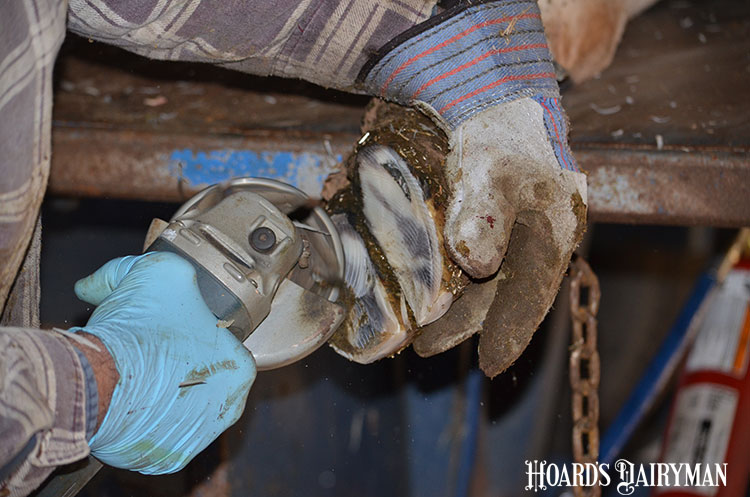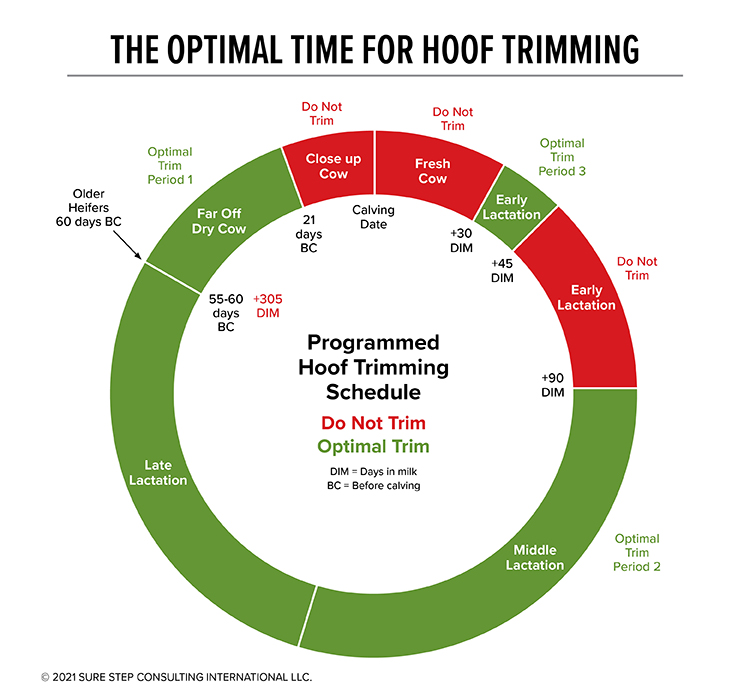
Hoof trimming done the right way at the right time goes a long way in preventing lameness. During the July Hoard’s Dairyman webinar, Karl Burgi explained that the best trimming schedule is one that fits a particular herd’s needs.
“My goal for trimming is to collect good data, look at the data, and then set the trimming schedule,” he said. However, there are certain times during a cow’s lactation that all farms should avoid trimming if possible.
For Burgi, who is a hoof trimmer, consultant, and founder of the Save Cows Network, those “no trimming” periods all revolve around calving. “During the fresh cow period, I don’t want to put a cow in the trimming chute,” he said. Instead, he advised farmers to do all the trimming in the green time periods shown in the diagram below.
This proactive trimming schedule sets cows up for more hoof health success. “The goal for me is to have no lameness occur in those red periods,” he shared. “We know what happens when lameness happens here.” Negative consequences of lameness in recently fresh cows and extra trips to the trimming chute can mean delayed breeding, lower milk production, reduced peak production, and sometimes, these cows end up being culled from the herd.
“The last time I want to bring a cow into the trim chute is 21 days before calving,” Burgi advised. He said to check cows before they enter the close-up pen, or the week prior. Then, evaluate the hooves for any issues at 30 to 45 days, so that cows can be in top condition as they work toward peak milk production.

A group of animals Burgi encouraged farmers to evaluate and trim if needed is bred heifers approaching their first lactation.
“Choosing not to functional trim heifers prior to calving results in damage done for life,” Burgi shared. “Sometimes we do very little, but trimming heifers before calving pays off all over.”
For Burgi, the goal is that every animal, first lactation or older, enters the close-up pen with perfect claws. That is why three to eight weeks before calving is the optimal time to do a functional trim.
Zero precalving lameness
“We want no lameness in the close-up pen, at calving, or in the fresh pen,” he said.
Besides trimming, avoid overcrowding in close-up and fresh cow pens, and provide the best cow comfort possible for this group of animals. “We need to have them lie down as much as possible to reduce inflammation,” Burgi noted. “Inflammation causes big changes within the claw, and there is no going back.”
To hear more from Burgi, watch the July Hoard’s Dairyman webinar, “Three keys to exceptional hoof health.” This webinar was sponsored by Hoof-Zink.








